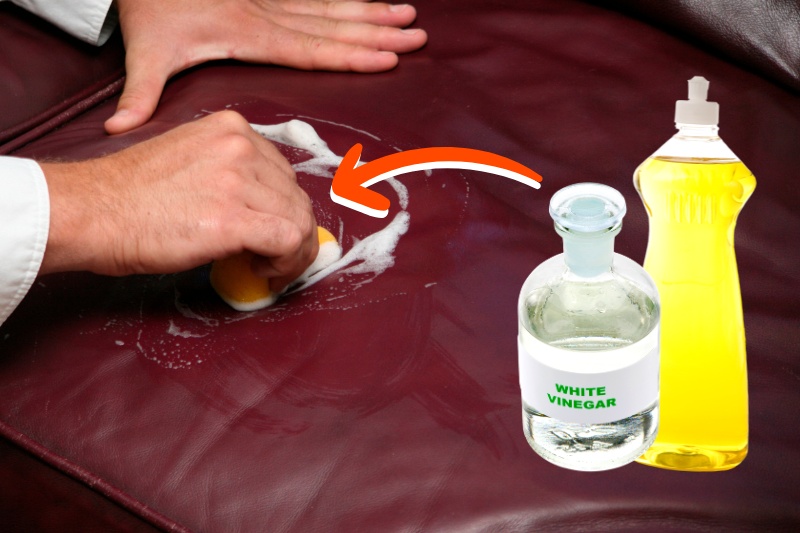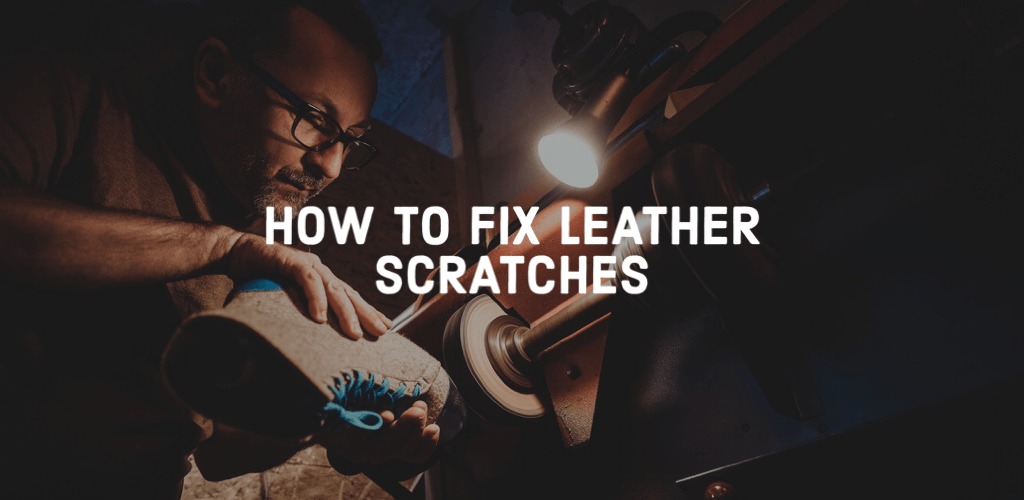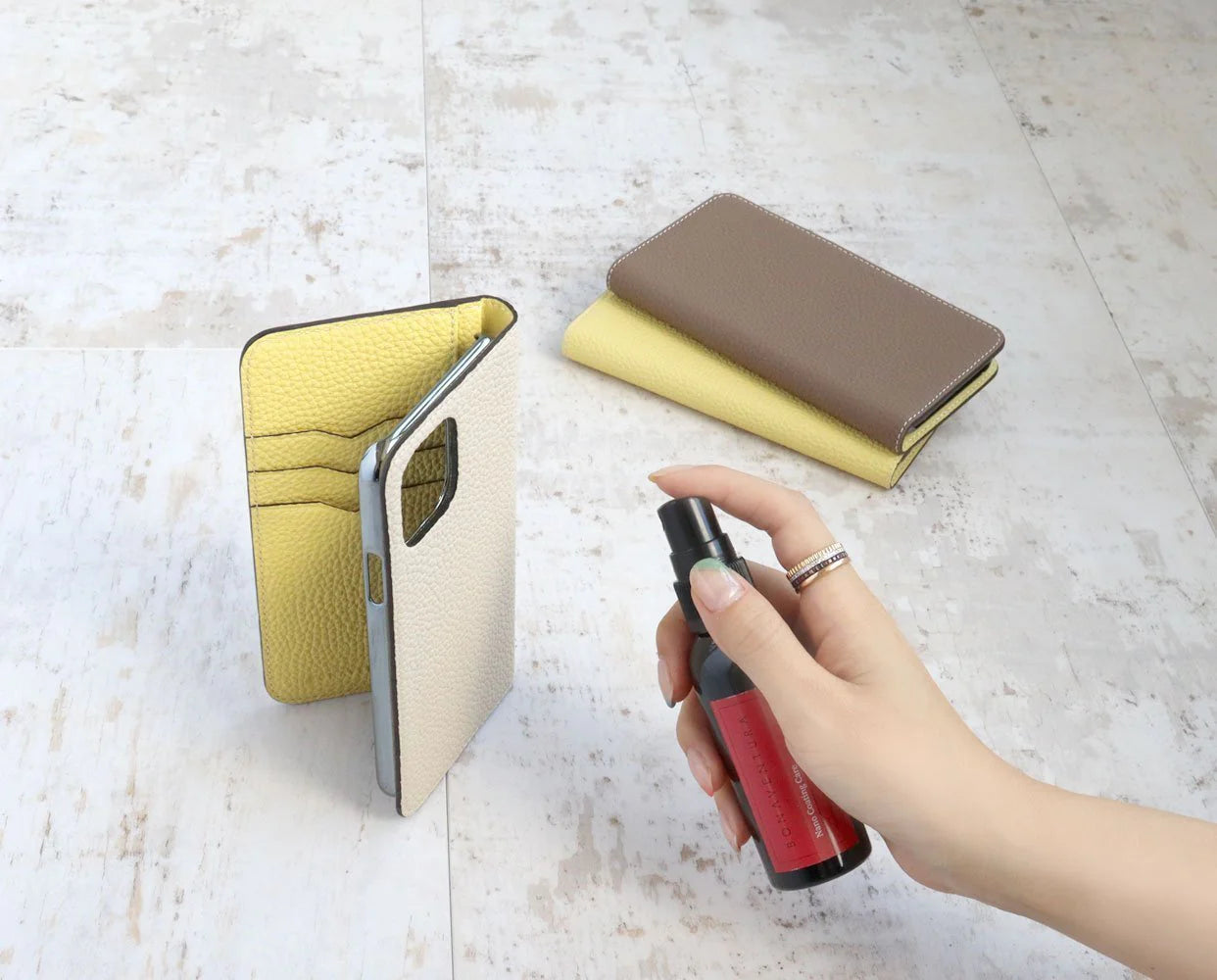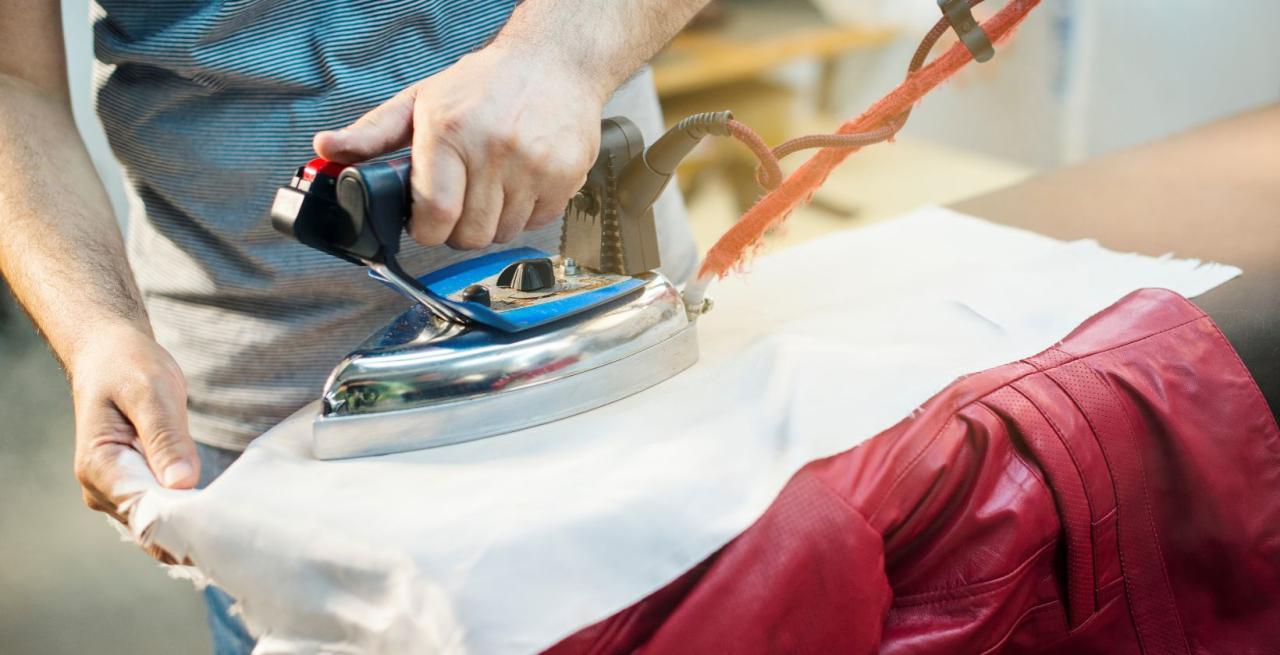Assessing the Severity of Verdigris

Proper assessment of verdigris damage is crucial for selecting the appropriate removal method and ensuring optimal leather preservation. Ignoring the extent of the stain can lead to ineffective treatments, potentially worsening the damage or causing further discoloration. Understanding the depth and spread of the stain is essential for a successful outcome.
Thorough examination of the affected area allows for a precise evaluation of the stain’s severity. This involves considering factors like the stain’s intensity, distribution, and any accompanying signs of leather deterioration. A visual inspection, combined with careful probing and testing, helps determine the appropriate course of action.
Identifying the Extent of Verdigris Damage
Visual assessment is the first step in identifying the extent of verdigris damage. Observe the intensity and distribution of the greenish-blue stain. Is it concentrated in a small area, or does it spread across a wider section? Notice any variations in the stain’s shade or intensity. These variations might indicate different levels of penetration or contamination.
Methods for Determining Stain Penetration
Several methods can help determine the depth of verdigris penetration into the leather fibers. A gentle probing with a soft, blunt object like a toothpick or a soft-bristled brush can reveal the level of stain penetration. Avoid sharp objects that could further damage the leather. If the stain appears to be superficial, it might be possible to remove it with milder cleaning solutions. However, if the stain is deeply embedded, more intensive and potentially more aggressive methods might be required.
Severity Levels of Verdigris Damage
Determining the severity of verdigris damage is critical to choosing the right cleaning approach. The table below provides a framework for assessing the severity of the damage. Visual observations, combined with gentle probing, can assist in classifying the stain according to the provided descriptions.
| Severity Level | Visual Description | Recommended Actions |
|---|---|---|
| Slight | A thin, superficial layer of verdigris, easily seen but not deeply embedded. The stain is concentrated in a limited area and shows little to no discoloration beyond the immediate affected area. | Gentle cleaning with a mild solution, possibly a mixture of water and mild soap or leather cleaner. |
| Moderate | The verdigris stain is more pronounced, showing a deeper penetration into the leather. It might affect a larger area and exhibit more intense coloration. Minor signs of leather discoloration or surface damage may be present. | Use a more targeted cleaning solution, possibly including a specialized leather cleaner formulated for removing stains. Consider professional assistance if the stain is significant. |
| Severe | Deeply embedded verdigris stains, significantly affecting a large area. The leather may show substantial discoloration and signs of significant deterioration, like cracking or loss of flexibility. | Professional leather restoration services are highly recommended. Aggressive cleaning methods should be avoided to prevent further damage. |
Safety Precautions for Removing Verdigris

Removing verdigris from leather requires careful attention to safety. Improper handling of cleaning solutions can lead to significant risks, from minor skin irritation to more severe health problems. Adhering to safety precautions is paramount to ensuring a safe and effective cleaning process.
Proper safety measures minimize the risk of accidents and protect the user from potential hazards associated with the cleaning process. This includes using appropriate protective gear, maintaining proper ventilation, and adhering to safe disposal practices for cleaning solutions. Understanding the potential hazards and taking the necessary precautions ensures a safe and successful verdigris removal procedure.
Handling Cleaning Solutions
Careful handling of cleaning solutions is essential to prevent accidental exposure. Solutions used for removing verdigris can vary in their chemical composition, leading to potential irritations or allergic reactions. Always read the labels of cleaning solutions thoroughly before use and follow the manufacturer’s instructions precisely. Solutions may contain corrosive or toxic substances; therefore, using appropriate safety gear is critical.
Potential Hazards
Several hazards are associated with removing verdigris, varying based on the cleaning solution used. These can range from mild skin irritation to more serious health concerns. Some common hazards include:
- Skin Irritation: Direct contact with cleaning solutions can cause skin irritation, ranging from mild redness and itching to more severe reactions like blistering and burns.
- Eye Damage: Contact with cleaning solutions can lead to eye irritation, corneal damage, and even blindness in extreme cases. Therefore, eye protection is crucial.
- Respiratory Problems: Some cleaning solutions can release fumes or vapors that irritate the respiratory system. Prolonged exposure can lead to coughing, shortness of breath, and other respiratory complications. Adequate ventilation is vital in these situations.
- Allergic Reactions: Certain individuals may be allergic to specific chemicals in cleaning solutions. Allergic reactions can range from mild skin rashes to severe anaphylactic shock.
- Ingestion: Accidental ingestion of cleaning solutions can cause severe health problems. Always keep cleaning solutions out of reach of children and pets.
Protective Equipment
Using appropriate protective equipment is crucial for minimizing the risk of exposure to harmful substances. This includes:
- Gloves: Wear appropriate, chemical-resistant gloves to protect your hands from direct contact with cleaning solutions. Different solutions require different types of gloves. Check the glove material’s compatibility with the specific solution.
- Eye Protection: Always wear safety glasses or goggles to shield your eyes from splashes or fumes. Full face shields may be necessary for some solutions, depending on their potential hazards.
- Respiratory Protection: If the cleaning solution produces fumes or vapors, wear an appropriate respirator to filter the air you breathe. Consult with a safety professional to determine the correct respirator type.
Proper Ventilation
Adequate ventilation is crucial to minimize exposure to harmful fumes or vapors released during the cleaning process. Ensure good airflow in the area where you are working. Open windows and doors, and use fans to circulate air, particularly if using solutions with strong odors or fumes.
Disposal Methods
Proper disposal of cleaning solutions is critical to prevent environmental contamination and protect public health. Follow local regulations regarding the disposal of chemical waste. Never pour cleaning solutions down the drain or into the environment. Check if the cleaning solution can be neutralized or if it requires special disposal procedures. Contact your local waste management authority for guidance on the appropriate disposal methods for cleaning solutions used in verdigris removal.
Mild Cleaning Methods for Verdigris

Removing verdigris from leather requires a delicate approach. Aggressive methods can damage the leather’s delicate fibers, while mild methods offer a safer, more effective way to address the issue without compromising the material’s integrity. These gentler methods are often preferable, especially for leather items of higher value or historical significance. Careful consideration of the solution’s properties and the leather’s specific composition is crucial.
Mild Cleaning Solutions for Verdigris Removal
Mild cleaning solutions are designed to gently loosen and remove verdigris without harming the leather. They typically involve natural ingredients or mild chemical compounds. This approach minimizes the risk of damaging the leather’s surface or causing discoloration. The success of these methods depends on the severity of the verdigris stain and the type of leather.
Vinegar Solution
Vinegar, particularly white distilled vinegar, is a common household item with mild acidity that can help loosen verdigris. Its effectiveness stems from its ability to react with the copper compounds in verdigris, facilitating its removal. A diluted solution is recommended for application, to prevent any potential damage to the leather. Diluting the vinegar with water (e.g., 1 part vinegar to 3 parts water) creates a safe and effective cleaning agent.
Baking Soda Paste
A paste made from baking soda and water can effectively lift verdigris from the leather’s surface. Baking soda’s mild abrasiveness gently exfoliates the stained area, while the water helps to create a slurry for easy application. The paste should be applied with a soft cloth or sponge, avoiding excessive pressure. This approach is particularly suitable for less severe verdigris stains.
Lemon Juice Solution
Lemon juice, a natural citrus extract, possesses mild acidity that can help break down verdigris. Its use is similar to vinegar, in that it reacts with the copper compounds in the verdigris. A diluted solution of lemon juice and water is advisable, to prevent potential discoloration of the leather. The solution should be applied with a soft cloth, avoiding any prolonged exposure to the leather.
Comparison of Mild Cleaning Solutions
| Cleaning Solution | Effectiveness | Safety | Cost |
|---|---|---|---|
| Vinegar Solution | Moderate to High | High | Low |
| Baking Soda Paste | Moderate | High | Low |
| Lemon Juice Solution | Moderate | High | Low |
This table provides a general comparison. Effectiveness can vary based on the severity of the stain and the type of leather. Safety is rated based on the potential for minimal harm to the leather. Cost refers to the readily available and affordable nature of the ingredients. Always test any solution in an inconspicuous area first.
Advanced Cleaning Methods for Verdigris
Stubborn verdigris stains often necessitate more aggressive cleaning methods than simple surface treatments. These advanced techniques, while potentially more potent, require careful consideration of safety protocols and the specific characteristics of the leather to avoid damage. Understanding the nuances of these approaches is crucial for effective removal without compromising the integrity of the material.
Enzymatic Treatments
Enzymatic cleaners are biological agents designed to break down organic compounds, which can be effective against verdigris. These solutions utilize natural enzymes to target the verdigris deposits, effectively dissolving them without harsh chemicals. The process is generally gentler on the leather than abrasive methods.
- Application: Apply the enzymatic cleaner to the affected area, following the manufacturer’s instructions carefully. Ensure thorough coverage of the stain.
- Incubation: Allow the solution to sit for the recommended time period, typically indicated on the product label. Avoid prolonged exposure, as this may lead to leather degradation.
- Neutralization: After the incubation period, neutralize the solution with a mild detergent or a neutralizer solution, again following manufacturer’s instructions. Rinse the area thoroughly with clean water.
- Drying: Allow the leather to dry completely in a well-ventilated area, away from direct heat sources.
Abrasive Techniques (With Caution), How to remove vertigris from leather
In cases where milder methods prove insufficient, abrasive techniques might be considered. However, this approach should be employed only with extreme caution and with consideration for the leather’s thickness and quality. Incorrect application can lead to scratching or damage to the leather’s surface.
- Selection of Abrasive: Choose a mild abrasive, such as a soft-bristled brush or a very fine-grit sandpaper. Avoid any abrasive with coarse grains that could scratch the leather.
- Gentle Application: Gently rub the abrasive over the stain in a circular motion, ensuring not to apply excessive pressure.
- Careful Monitoring: Continuously monitor the leather’s reaction to the abrasive. If any signs of damage (e.g., discoloration, cracking) appear, immediately stop the process.
- Cleaning: After removing the verdigris, clean the area with a damp cloth and a mild detergent, then rinse thoroughly.
- Drying: Dry the area completely as described in previous methods.
Specialized Cleaning Solutions
Specialized cleaning solutions, formulated for particular types of stains and materials, may be available for stubborn verdigris. These solutions often contain specific ingredients designed to target and remove the stain without harming the underlying material.
- Product Selection: Consult with a leather specialist or a professional cleaning service to determine the most suitable specialized cleaning solution for the specific type of leather and verdigris.
- Application: Apply the solution according to the manufacturer’s instructions, paying close attention to the recommended application methods.
- Testing: Always test the solution in an inconspicuous area of the leather first to ensure compatibility and avoid unexpected reactions.
- Cleaning: Clean the affected area as directed by the product instructions. Thorough rinsing is essential.
- Drying: Allow the leather to dry thoroughly in a well-ventilated area.
Preventing Verdigris on Leather
Verdigris, a blue-green patina, can mar the beauty and integrity of leather items. Understanding the factors contributing to its formation is crucial for effective prevention. Proactive measures can significantly reduce the risk of verdigris development, ensuring the longevity and aesthetic appeal of your leather goods.
Preventing verdigris involves addressing its root causes. This encompasses understanding the environmental conditions that promote the chemical reactions leading to verdigris formation and implementing appropriate storage and handling practices. Consistent maintenance routines are also vital in preserving the leather’s natural resistance to these issues.
Causes of Verdigris Formation
Verdigris typically forms when copper or bronze components, often found in metal hardware, fastenings, or decorative elements on leather items, interact with moisture and air containing pollutants like sulfur dioxide or ammonia. These pollutants facilitate the oxidation process, leading to the characteristic blue-green discoloration.
Preventing Verdigris Buildup
Maintaining leather items in a controlled environment can significantly mitigate the risk of verdigris. Regular cleaning and proper storage are key components of a proactive approach.
- Regular Cleaning: Gentle cleaning with a suitable leather cleaner helps remove surface contaminants that can accelerate the oxidation process. Cleaning should be performed following manufacturer recommendations and using appropriate cleaning solutions.
- Proper Storage: Storing leather items in a cool, dry environment, away from direct sunlight and moisture, is critical. Using breathable storage materials such as acid-free tissue paper or archival-quality boxes can further protect the leather. Avoid storing leather items in airtight containers or plastic bags, as these can trap moisture and encourage mold or mildew growth.
- Handling Practices: Handling leather items with clean hands and avoiding contact with harsh chemicals or excessive moisture is essential. Ensure leather is dry before storage. Frequent contact with water or damp environments significantly increases the risk of verdigris.
Environmental Factors Contributing to Verdigris
Certain environmental factors can significantly contribute to verdigris formation. Controlling these factors is crucial for maintaining the integrity of leather goods.
- Moisture: High humidity levels can lead to increased moisture absorption by the leather, creating a favorable environment for oxidation reactions. Excessive moisture promotes microbial growth, which can further contribute to verdigris formation. For example, leather items stored in humid basements or bathrooms are at a higher risk of verdigris than those stored in well-ventilated areas.
- Air Pollution: Air pollutants, such as sulfur dioxide and ammonia, can accelerate the oxidation process on copper or bronze elements, triggering verdigris formation. Areas with higher industrial activity or vehicle emissions may have higher levels of these pollutants, increasing the risk of verdigris. For instance, leather goods in industrial areas are more prone to verdigris than those in rural settings.
- Temperature Fluctuations: Significant temperature changes can cause moisture condensation on leather items, increasing the risk of verdigris formation. This is particularly relevant for items stored in areas that experience drastic temperature swings between day and night.
Strategies for Protecting Leather from Moisture and Humidity
Implementing strategies to minimize moisture and humidity exposure is vital for preventing verdigris.
- Use of Silica Gel: Silica gel packs can absorb moisture in storage areas, keeping the humidity low. Place silica gel packs inside storage containers or boxes to maintain the dryness of the leather goods.
- Desiccants: Using desiccants, such as activated charcoal, can help maintain a drier environment. These materials are very effective in absorbing moisture from the air.
- Proper Ventilation: Ensuring adequate ventilation in storage areas can reduce humidity levels, preventing moisture buildup on leather items. Open windows or use fans to improve air circulation in storage rooms.
Troubleshooting Common Issues

Addressing potential problems during verdigris removal is crucial for preserving the leather’s integrity and achieving satisfactory results. Understanding the possible complications and their solutions will allow you to confidently tackle these challenges and restore your leather items to their former glory.
Incorrect application of cleaning solutions or inadequate preparation can lead to unexpected outcomes. Careful consideration of the leather type, the severity of the verdigris, and the chosen cleaning method is paramount. This section Artikels common issues and provides practical steps to mitigate them.
Identifying Staining Persistence
Persistent staining despite proper cleaning methods suggests the verdigris may have penetrated the leather’s layers deeply. A deeper penetration might require a more aggressive cleaning method or a professional intervention. If the stain remains, assess the leather’s condition carefully before applying further cleaning agents. Repeat the process using a different, milder method, ensuring thorough rinsing.
Leather Damage from Cleaning Solutions
Cleaning solutions, even mild ones, can sometimes react with the leather, causing discoloration, weakening, or cracking. This is particularly true for delicate leathers like suede or nubuck.
- Discoloration: A change in the leather’s color, either a darkening or a lightening, indicates a chemical reaction. Assess the extent of the discoloration. If minor, gently blot the affected area with a clean, damp cloth. If significant, consult a leather specialist.
- Weakening: A noticeable loss of suppleness or stiffness in the leather suggests the cleaning solution has weakened the fibers. Avoid further cleaning in this case. Use a leather conditioner to restore suppleness.
- Cracking: Deep cracks indicate significant damage to the leather’s structure. This usually happens with excessive or prolonged exposure to cleaning solutions. A leather specialist should be consulted for severe cracking.
Handling Different Leather Types
Different leather types react differently to cleaning solutions. This variation necessitates careful consideration during the cleaning process. For example, aniline leather is more sensitive than pigmented leather, requiring gentler methods.
| Leather Type | Cleaning Considerations |
|---|---|
| Aniline | Use mild cleaning solutions and avoid harsh scrubbing. Thorough rinsing is critical. |
| Pigmented | More resistant to cleaning solutions, but still requires caution. Mild solutions and careful rinsing are advised. |
| Suede/Nubuck | Requires very gentle cleaning methods. Use a specialized suede brush or a soft cloth dampened with a leather-safe solution. |
Assessing the Damage Extent
Evaluating the damage extent after the cleaning process is essential for determining the next course of action. Minor discoloration can often be addressed with a simple cleaning solution, while more significant damage may require professional intervention. Always document the extent of the damage to track the progress of the treatment.
“Thorough observation and careful assessment of the leather’s response to cleaning solutions are crucial to preventing further damage and ensuring a successful outcome.”
Case Studies and Examples: How To Remove Vertigris From Leather

Verdigris removal from leather requires careful consideration of the leather type, the severity of the stain, and the cleaning methods employed. Different leathers react differently to various cleaning agents, and a nuanced approach is essential to avoid damaging the material. This section provides case studies and examples to illustrate successful verdigris removal techniques across different leather types.
Understanding the specific type of leather is crucial for effective verdigris removal. Different leather types have varying levels of porosity and chemical resistance. A leather wallet, for instance, may require a different approach than a leather sofa, due to the varying durability and thickness of the material. An improperly chosen cleaning method can lead to irreversible damage or uneven results.
Assessing Verdigris on Different Leather Types
Different leather types present unique challenges when dealing with verdigris. Understanding the material’s composition and structure is key to a successful outcome. For example, full-grain leather, with its natural imperfections and thicker layers, often requires more delicate treatment than aniline leather.
Successful Verdigris Removal Techniques
Successful verdigris removal often involves a combination of methods, tailored to the severity of the stain and the specific leather type. A mild cleaning approach might suffice for a light verdigris stain on a suede handbag, while a more advanced technique, possibly involving a specialized cleaner, might be necessary for a deeply ingrained stain on a full-grain leather briefcase.
Leather Type and Recommended Cleaning Methods
The table below provides a general guideline for different leather types and the recommended cleaning methods for verdigris removal. It’s crucial to note that these are general recommendations, and professional advice should always be sought for severe or complex cases.
| Leather Type | Recommended Cleaning Method | Notes |
|---|---|---|
| Full-Grain Leather | Mild cleaning solution (e.g., a mixture of water and mild soap), followed by a gentle wiping motion. | Avoid harsh scrubbing or abrasive materials. |
| Aniline Leather | Use a specialized leather cleaner designed for aniline leather. | Test the cleaner on a small, inconspicuous area first. |
| Suede Leather | Use a suede brush or a soft cloth to gently remove the verdigris. | Avoid excessive moisture. |
| Nubuck Leather | Similar to suede, use a suede brush and avoid moisture. | Use a specialized leather cleaner if needed. |
| Top-Grain Leather | Mild cleaning solution and gentle wiping. | Be cautious about using strong chemicals. |
Popular Questions
How to remove vertigris from leather – Q: Can I use regular dish soap to remove verdigris?
A: While dish soap might seem like a simple solution, it’s not recommended for removing verdigris from leather. It can potentially damage the leather’s surface. More specialized cleaning solutions are generally more effective and safer.
Q: How long should I let the cleaning solution sit on the stain?
A: The recommended soaking time varies depending on the cleaning solution and the severity of the stain. Always follow the specific instructions provided with the product. Excessive soaking can damage the leather, so be cautious.
Q: What if the verdigris stain is deep?
A: Deep-seated verdigris stains might require more advanced cleaning methods, such as using specialized leather cleaning tools or a professional leather cleaner. Assess the damage carefully before proceeding.